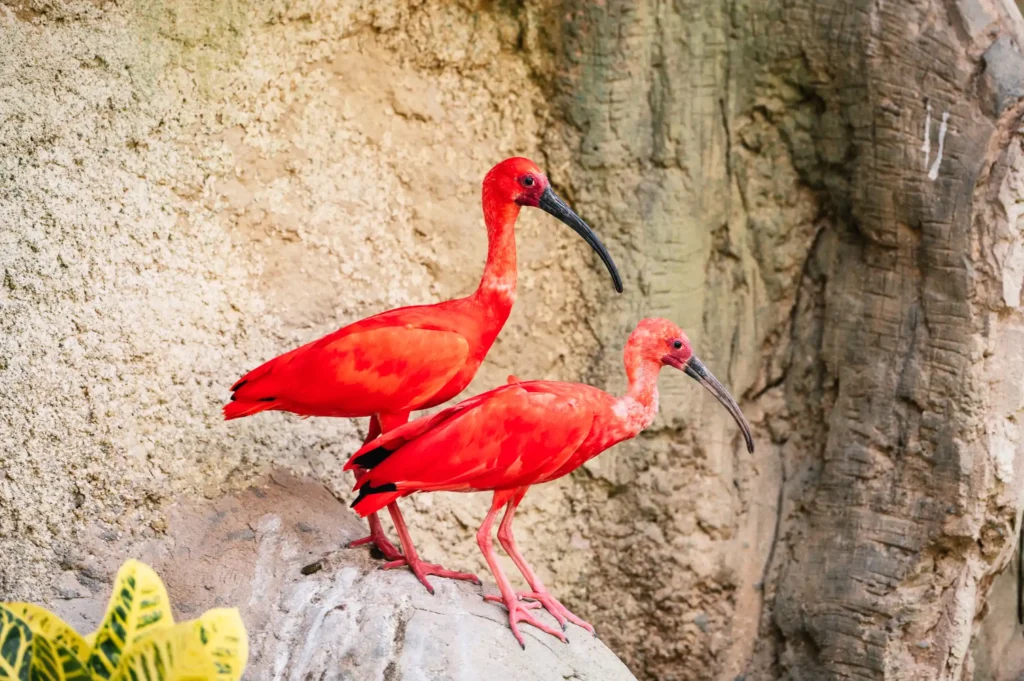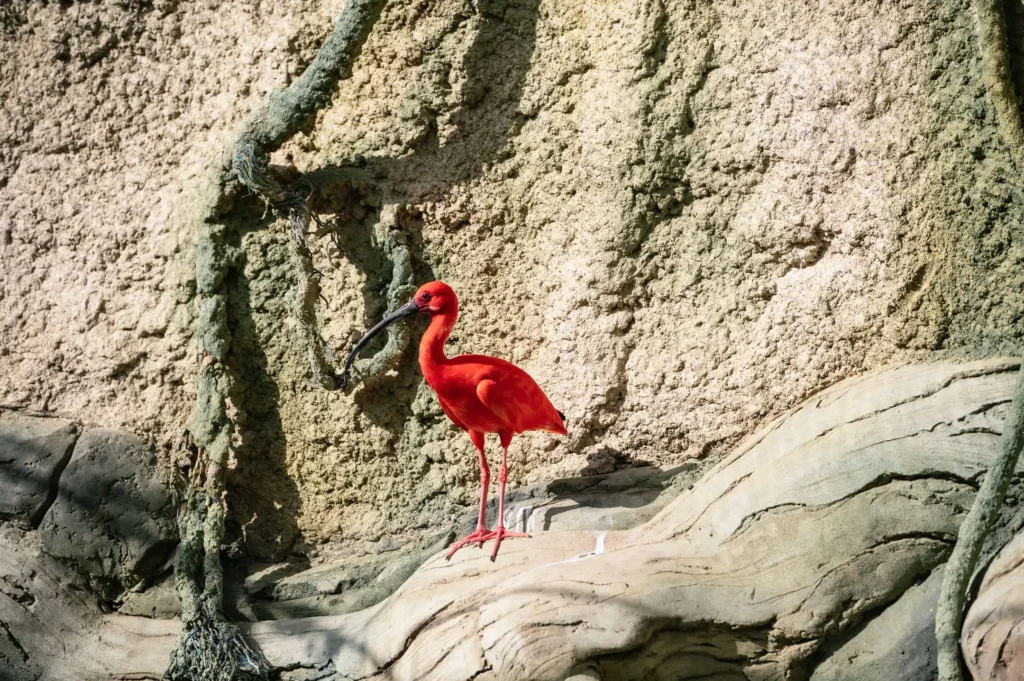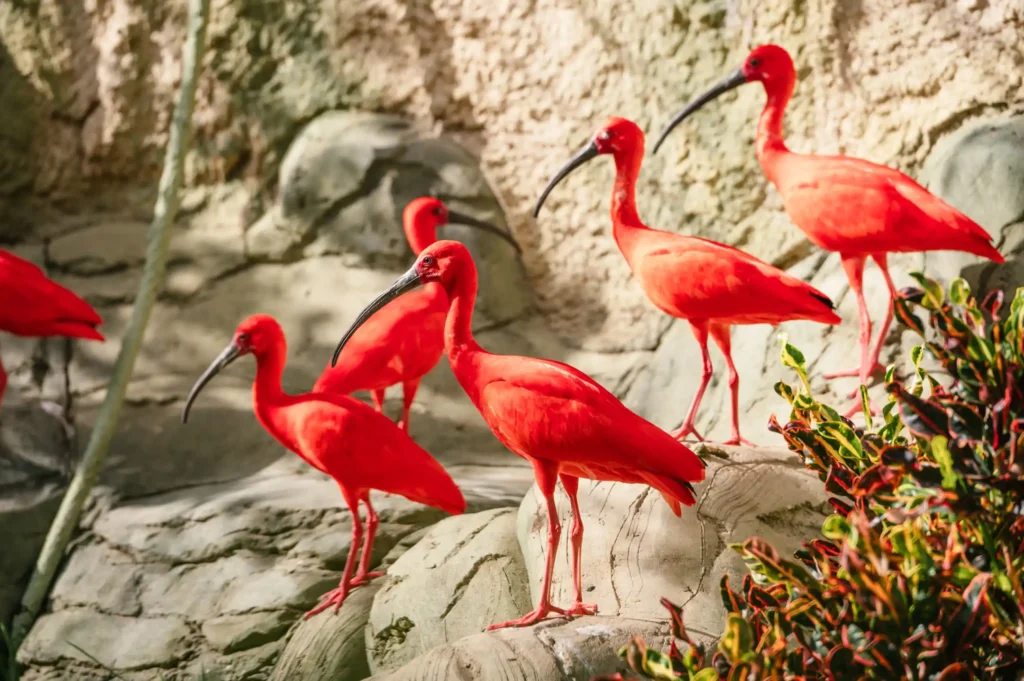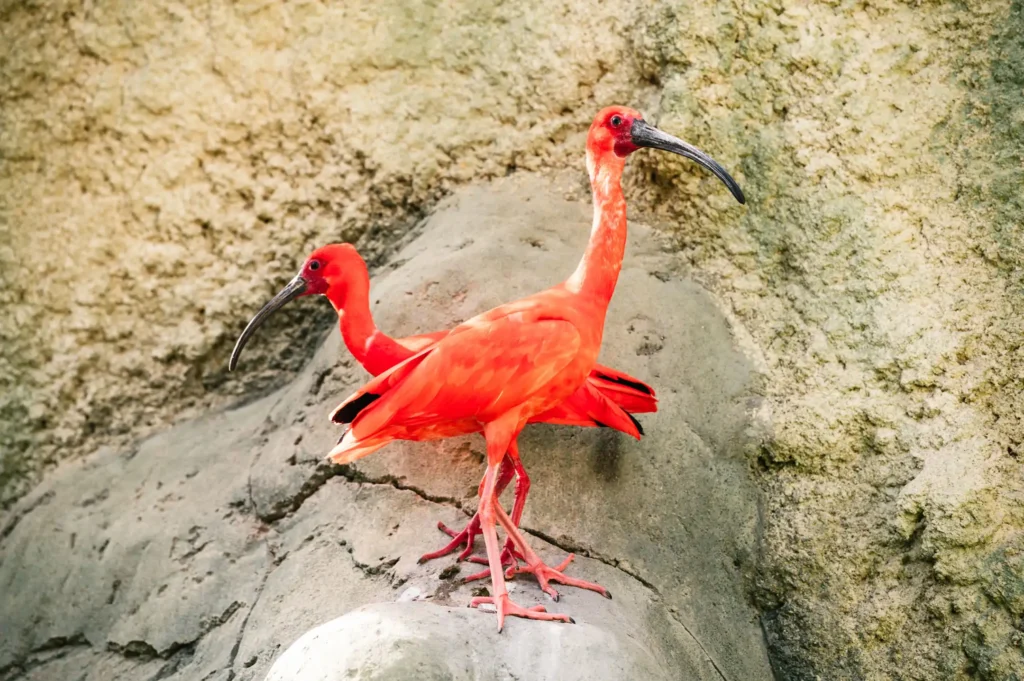During their juvenile stage, the colour of their plumage is brownish, but as they become adults, their feathers take on the characteristic reddish colour of this species.
Physical Features
Pelecaniform bird with long bill and legs, striking plumage, reddish in its adult stage and brownish in its juvenile stage. The reddish hue of their feathers and skin is acquired from the natural pigment found in their diet.
Scarlet Ibis reach weights of around 600 grams and measure between 55 and 65 cm in height.
Habitat
They frequent shallow wetlands such as coastal lagoons, marshes, etc.
Their distribution area is very wide and populations are found in Central America and eastern South America.
Diet
Ibises feed on a wide variety of foods, such as fruits, seeds, eggs, etc. But they mainly feed on insects, crustaceans and small fish, for which they use their long, sharp beak to capture them among the rocks and mud of the marshes and lagoons they frequent. To do so, they move around different feeding grounds, flying for miles in large flocks.
Some of their food, especially small crustaceans, contains a high content of carotenoids, a substance that causes their plumage to be more or less pink in colour.
Reproduction
Their reproduction varies according to whether the season is more or less rainy and they lay from 2 to 5 eggs depending on the weather conditions and the supply of food. Their nest is made of small leaves and branches that are piled up, and is usually located among the branches of trees or bushes.
Incubation lasts about 23 days and they usually form breeding colonies, nesting close together, sometimes even several on the same tree.
Behaviour
These birds exhibit a gregarious behaviour and they live in colonies, which can even sometimes be formed by several species in mixed groups.
Their habits are mainly sedentary, remaining in the same place without moving around much unless the lack of food requires it, otherwise they spend most of their time resting or walking slowly looking for food among the stones or mud.
Threats
The main threat to these birds is the destruction of their habitat and the disturbance of their habitats by humans due to noise and crowds near their colonies.
Status and conservation
It is an endangered species and is therefore included in Appendix II of the CITES Convention.
Classified as Least Concern (LC) according to the IUCN Red List.





